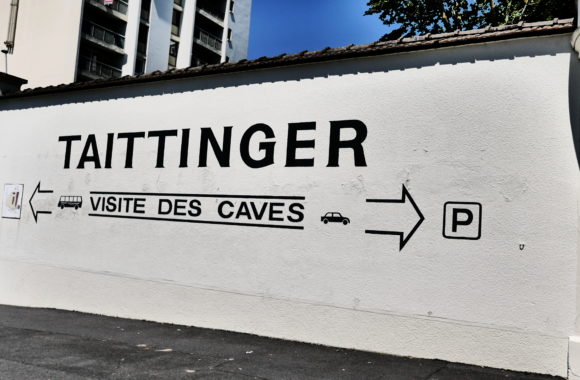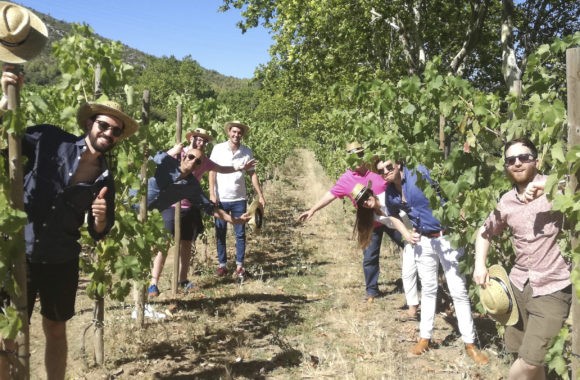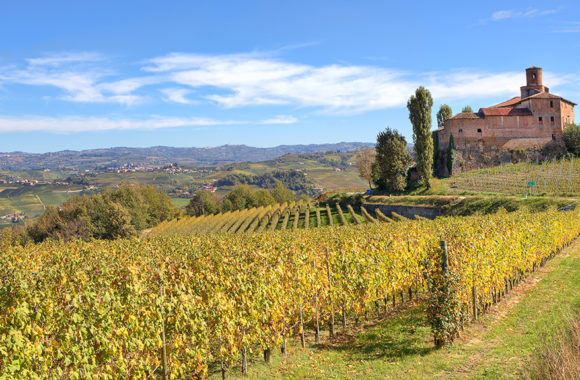
A Day in the Life of a UK Wine Merchant: Bordeaux En Primeur Week
· Xavier Hornblow Xavier Hornblow on
One of the most traditional aspects of the wine trade is the annual phenomenon that is a Bordeaux en primeur campaign. I’m coming to the end of my eleventh en primeur vintage so I ought to have enough experience to share some insights into the rather peculiar aspect of the life of a wine merchant. How the en primeur campaign itself works I may cover in a future blog, if the bosses let me near a typing device again after this particular exposé, which focusses on the wine trade “Big Week Out” that is En Primeur week.
Before I get ahead of myself I should explain en primeur for the uninitiated, or what Americans in their matter-of-fact/unromantic way call wine “futures”. The concept was dreamed up many years ago by the Bordeaux wine trade as a means of generating cash flow before the wine is ready to drink, before indeed the wine was even completed. Like migrating birds, the entire global wine trade and press flock to Bordeaux in spring. The chateaux open their iron gates and draw up the portcullises to allow the trade to taste barrel samples of the previous vintage. The famous wine critics then gather their thoughts and in the subsequent weeks issue tasting notes and scores and the public will get that chance to buy the wines (in theory) at a favourable price in bond (i.e. not paying any taxes). A full two years later when the wine has completed its time in oak and been bottles and rested, it’s finally dispersed to the cellars or storage units of the world’s wine collectors.
Of course it seems glamourous visiting some of the most hallowed wineries on the planet, but in en primeur it feels like proper work too: it is quite normal to visit 13 or 14 chateaux in a day. That can make for a very tight schedule, especially given we are in France where having a long lunch (and wine with no spitting!) is considered mandatory. Just like any day of work one has to ride through the low blood sugar post-lunch malaise; if you’re in luck you’ll have the 2pm slot at Lafite or Cheval Blanc in which case it’s pretty easy to cheer up, given you are tasting some of the greatest wines on the planet, albeit in their infancy.
En primeur week is always exciting, but it does follow a predictable rhythm, and there are certain unavoidable conversational tropes. When you bump into competitor wine companies the small talk is asking “Is it busier than last year?” Representatives at the chateau will ask “how does the market feel about pricing?” and we the wine trade will dutifully respond, the well-worn mantra: “Not very well, please reduce your pricing this year!” Were you to deviate from this and say “I think your wine is a bargain at twice the price!” prepare to be hung drawn and quartered by the world’s wine trade.
Representatives of the chateaux always have an uncanny way of describing the currant vintage as the most desirable ever – the best wine is always the wine about to be sold! It’s the merchant’s job to make their own mind up, and find the reason (if it exists) why our beloved clientele should part with their money buying these wines and wait 10+ years to drink (or sell) them.
The people of Bordeaux, the bordelaise, are wonderfully adept at creating a fine impression, be it the exquisite beauty of the gardens at Pape Clement, the classic interiors of Chateau d’Issan or the almost intimidating artwork at Latour. When my colleagues and I were invited to dinner at Pontet Canet one evening I was shocked to see that along with the Union Jack and the tricolour of the French flag, they also had the New Zealand flag flying… in my honour! It was surely the proudest moment of my professional career since I had a walk-on speaking role on Power Rangers many moons ago.
Any fan of region needs to be aware of the duality of the wine wines of Bordeaux, split as they are by the Gironde River: Cabernet Sauvignon-based blends on the western side, the “Left-Bank”, and Merlot-based blends on the Eastern “Right-Bank”. Each region has a unique character. Hands down the most beautiful region aesthetically is St Emilion on the Right bank, a partially ruined medieval village on a rocky hillock. Its smaller, ultra glamourous neighbour Pomerol is a stark flat plateau, where are good number of “chateau” (= castles) actually look more like garages. Back on the left bank Pessac Leognan in parts looks like it could be gobbled up by the city of Bordeaux’s suburbia – it’s rather surreal stepping out of illustrious first growth Chateau Haut Brion and seeing tower blocks of the city a short distance away behind the gnarled old vines. Up the road, despite the unparalleled reputation of the wines it produces, the actual village of Pauillac is a rather bleak port town, the ideal setting for a Stephen King novel should he ever want to relocate to France.
In stark comparison to their more rustic compatriots in Burgundy, the average Bordeaux chateau proprietor is positively aristocratic – with perfectly tailored suits. The giveaway that they are wine people is the ubiquitous gilet… the “must have” extra layer for sneaking down into the cool damp cellar for another dusty magnum as lunch drifts on into its third hour…
And what do the wine trade themselves wear? Well I can’t speak for other nationalities, but the UK wine trade? The male of the species displays his plumage in the form of blazer, blue shirt, brown brogue and most importantly: trousers any colour you can imagine as long as they’re not blue, grey or black.
I offer a few “dos and don’ts” for the would-be wine merchant ahead for the first visit to Bordeaux.
- Always be interested. Just about every chateau make “junior” wines, and although there may be virtually no commercial purpose in trying them, when a winemaker asks if you would like to try the Experimental natural wine they are making in the Cote de Castillion, the answer is always “yes!” You may be pleasantly surprised by the wine, and most importantly, it’s the polite thing to do. Silent hate vibes filled the room at a leading St Estephe property when the boorish German merchant insisted he was too busy to try anything other than the grand vin. That said, in a busy week it’s a relief to visit the likes of Pontet Canet and Pichon Lalande that make only 1 or 2 wines…
- Do not wear a white shirt. There is a lot of spitting going on out there and spittoon “splash back” is a constant hazard. Also, even when perfectly sober, it is perfectly easy to miss your mouth in the fog of war of a busy tasting. Dark coloured shirts only, please!
- Spittoons are dangerous places. Just as a child shouldn’t stray too close to a fireplace, spittoons are major hazards. They come in all shapes and sizes, one of the most popular being a large cylinder around hip height. They are far enough away from the mouth that the wine merchant can show off their spitting technique (ST). ST is incredibly important: more than one career in wine has been based on fine spit technique (I’m looking at you, Oz!) Matthew Jukes’ precision, speed and fine bead is legendary. That said, these are dangerous places to stand. For every “hot gun” spitter there will be another also-ran trying their luck, and you do not want to be the person on the receiving end, when the egg lands on their face and the red wine on your trousers!
- Blue teeth are normal. This is a very strange one for the uninitiated. Young red wine has very “grippy” tannin, much of which will over the day congeal on one’s teeth leaving them a rather disquieting blue/purple. And it gets worse: many people get unfortunate red marks at the edge of their top lips from constant tasting. My advice: don’t judge and don’t stare!
- Don’t forget your Rennies! France is a very intense place – I certainly don’t know how actual French people survive the place. With much wine, meat, sauces, cheese, foie gras, etc. my gastric system can survive unassisted for approximately 48 hours. So to avoid being a broken (and bloated) man, a healthy morning dosage of antacids is literally what the doctor ordered.
FAQs
Q: I love wine, and spitting seems like sacrilege to me. How do you manage not to drink the stuff?
A: With consummate ease. Have you ever felt like drinking wine at 9am in the morning?! (I really hope you answer “no” to that particular question!) Every day will start early, with the taste of coffee and toothpaste still lingering on the palate, so it’s very natural to keep things professional. Also, it’s not unusual to try 80+ wines in a day, and being drunk at a fancy chateau is not funny or cool, so spitting is utterly necessary.
Q: How can you tell if a wine is good when it’s a barrel sample, and how on earth can you know if it’ll age well?
A: Fair question, dear reader! It takes experience. If you were to try a single barrel sample you would be utterly bemused by what is generally a highly acidic, highly tannic, purple fruit-bomb. However the more you try, the easier it is to pick out the unique qualities in each wine. We look for pleasant flavours, complexity, intensity, the nature of the tannins (ripe and soft? dry and structured?), and the balance of fruit, tannin and acidity. Most wines are perfectly pleasant, some are truly sensorial sensations. If the wine has intensity, good acidity, plenty of tannin which is in harmony with the fruit, it’s likely to benefit from age. Simples!
Q: Do you ever get sick of wine?
A: Yes! At the end of a long day of tasting the wine merchant’s weapon of choice is extremely cold Lager. After a cleansing session of beer it may be possible to return to wine for the sake of pleasure rather than professional obligation. Thank you, Kronenbourg!
Not that I would ever ask for sympathy, but a week of wining and dining in Bordeaux is a marathon, and it is a relief to get back to the UK for a detox. Then are the weeks to collect one’s thoughts before the en primeur campaign starts when the wines are released. That too is a unique and rather bizarre process… and the subject of a blog in its own right.







